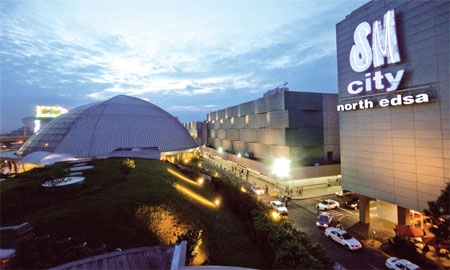Owned by Henry Sy, the richest man in the Philippines,
SM Investments Corporation is one of the country’s largest companies, dominant in retailing, banking and shopping mall development, and a fast-rising player in residential and tourism-oriented real estate.
SM has been careful about managing its resources, and has been growing year-on-year both financially and in terms of assets.
“The Philippines is still an emerging country,” says Corazon Guidote, vice president for Investor Relations. “There is a lot of potential, so SM is pouring a lot of resources into growing all of its core businesses.”
The most profitable part of the group is the retail business, which has been undergoing significant expansion. With 28 new stores opened in 2010, and several more this year, SM now has 144 retail outlets nationwide. These include 41 SM department stores, 31 SM supermarkets, 43 SaveMore branches, and 25 SM hypermarkets. The group also has total ownership of Pilipinas Makro, which has 4 Makro outlets.
“Retail has a lot of potential,” says Ms. Guidote. “We are mainly focused on Metro Manila now, but there is still a lot of potential in the provinces, and that is where we are growing at the moment.”
SM is also dominant in shopping malls, boasting no fewer than 41 across the country. By the end of 2011, the number of malls in the Philippines will have risen to 43, and an additional mall will have been added to the three the group already has in China, in the cities of Xiamen, Jinjiang and Chengdu.
Ms. Guidote recalls that the very first mall the company opened was a mere 1.3 million square feet, but was already the largest mall in the country. “It was at the height of the Marcos crisis, when the father of the current president was assassinated; we could not have gone into the market at a worse time,” she says. “But the growth has been phenomenal. It is now our largest and one of our most profitable malls, and we are continuing to expand it. Daily footfall there is at least 700,000 to over 1 million, and the occupancy rate is about 97%.”
Starting to challenge retail as the group’s main driver is its banking business; SM’s bank network is the largest in the Philippines. In the final quarter of last year, BDO Unibank, in which SM has a 41% interest, became the country’s largest bank in terms of assets, with 726 branches nationwide. Chinabank, in which the group has a 20% interest, is the eighth largest with 269 branches nationwide.
SM’s rapidly expanding property business has interests in residential, commercial, leisure, and hotel development. Its current portfolio includes 14 residential projects, 13 of which are in Metro Manila and one in Tagaytay City in the province of Cavite. This year will see the launch of at least five new residential projects, all located in prime locations within Metro Manila.
Last year, SM’s net profits were better than expected, rising by 15% to Php18.4 billion (around $420 million), with consolidated revenues increasing by 12% to Php179.3 billion from Php160.1 billion in 2009. The largest contribution came from retail (34%), with banking second (30%), followed by shopping malls and real estate (23% and 13% respectively).
SM has increased its capital expenditure program to Php47 billion this year, from Php40.6 billion last year, and with all its core businesses continuing to grow, expects to sustain double digit growth in 2011. Certainly, it began the year on a positive note, posting a 13% increase in net income in the first quarter.
Corazon Guidote attributes the group’s success to a highly focused approach that she says has made it part of the psyche of Filipinos.
“The Filipinos have been with us over the years in terms of growing the brand and the business,” she says. “SM reflects the progressive spirit of the Filipinos; we would not grow if the market did not support us.”

0 COMMENTS